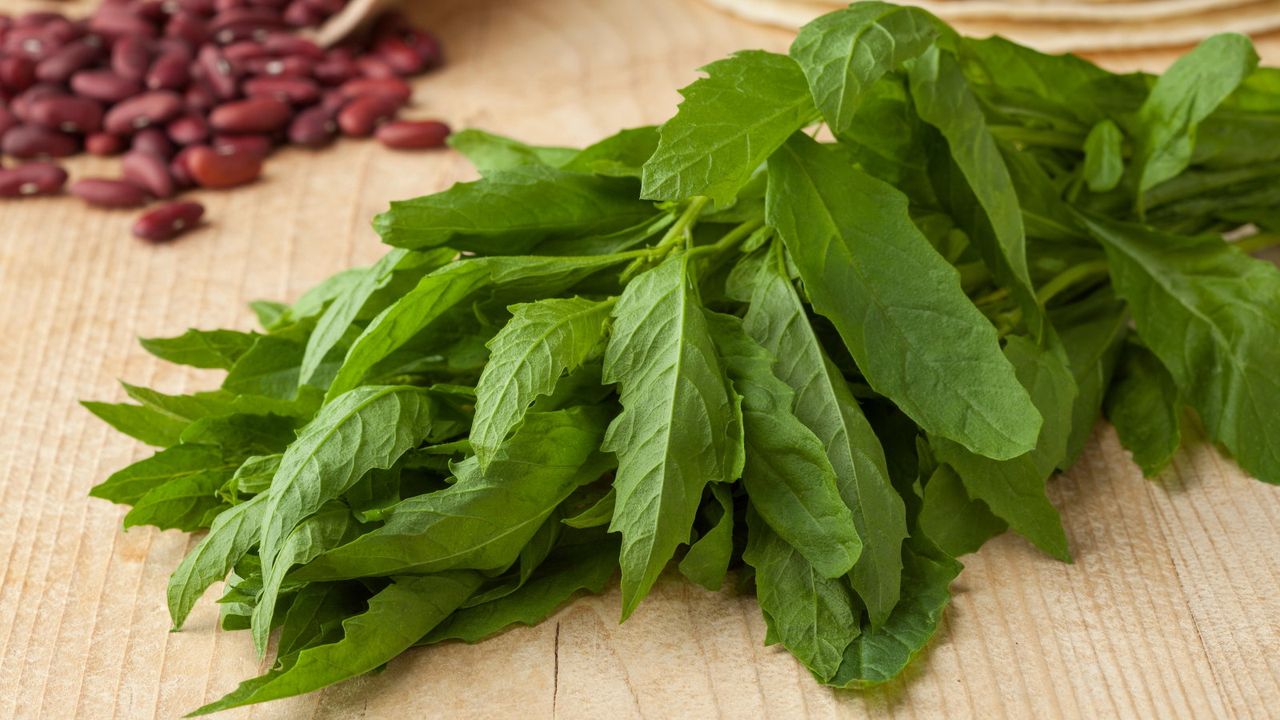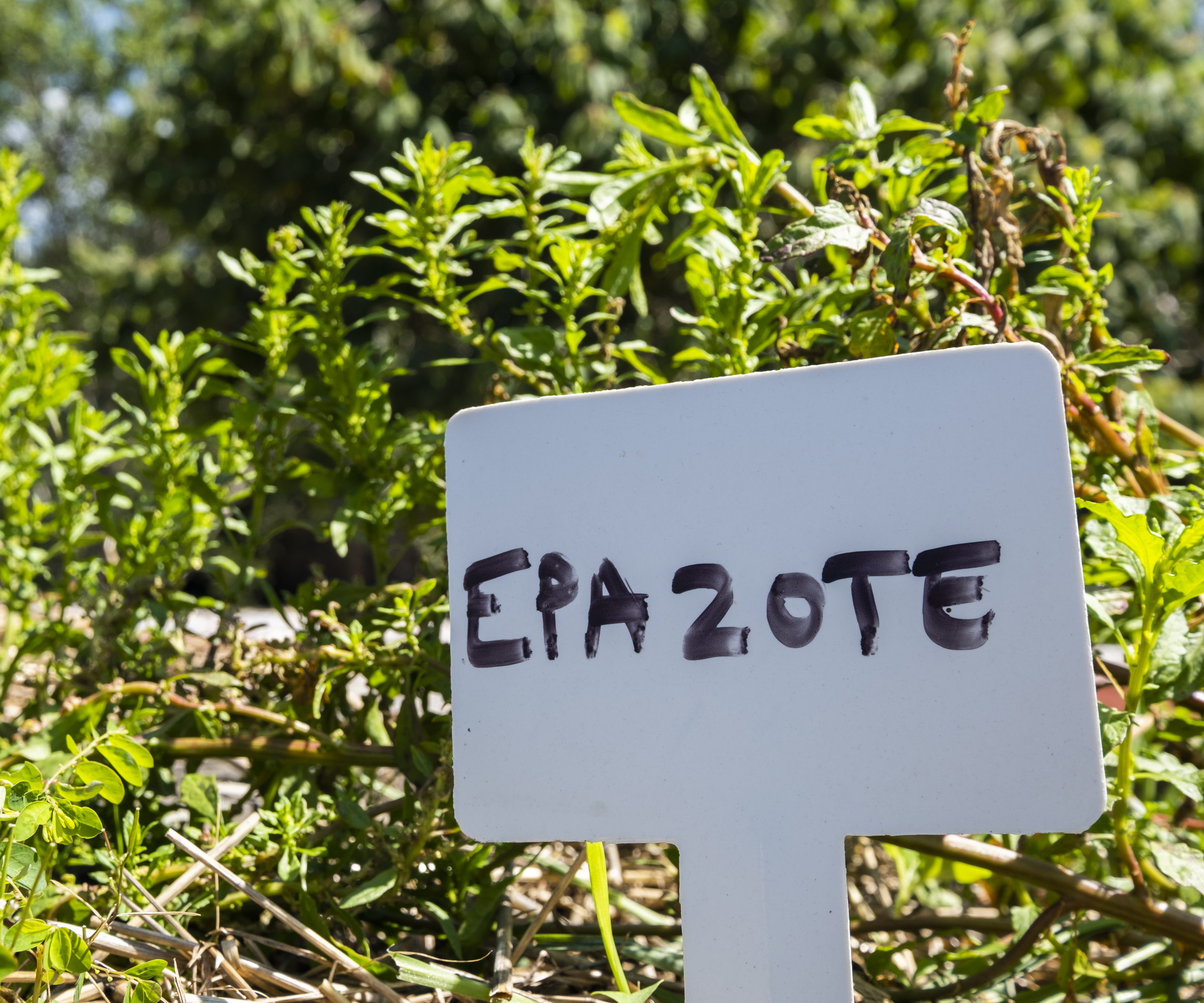
Epazote can be an acquired taste, and it is certainly not a common crop in vegetable or herb gardens. If you do a lot of Mexican cooking, though, you may use it regularly and have a desire to cultivate this strong-tasting plant at home for homegrown harvests.
If you are not aware of epazote, it is a plant that has been grown for its distinctive foliage for centuries. To some, it may be considered a weed, as it grows readily in most soils and self-seeds; to others, it is a common ingredient. Rest assured that any spreading habit can be mitigated by careful cultivation, including growing the plants in containers and regularly snipping them.
If you regularly cook enchiladas, tamales, salsa, or black beans, it may be an ingredient you’d love to pick from your own garden. Or, if you are looking for unique herbs to add to your vegetable or herb garden, you may be intrigued by this easy crop to grow. This guide looks closely at how to grow epazote, including expert tips for sowing and maintaining plants from an experienced horticulturist.

What is epazote?
Epazote (Dysphania ambrosioides) is a herb traditionally used in many Mexican dishes and has many common names, including wormseed, Mexican tea, paico macho, and yerba de Santa Maria.
It is a native plant of the Americas that grows to around four feet and can be grown in US hardiness zones 4-12. It tolerates some frost, but is commonly cultivated as an annual herb for its pungent, toothed leaves that have a strong anise or tarragon-like flavor.
Epazote is edible and has been utilized in Central and Southern American cuisine for centuries. However, it must only be consumed in small quantities, as it can be poisonous if large amounts are eaten.
How to grow epazote from seed

Epazote can be a simple crop to grow from seed. It can grow in varying conditions, but thrives best in warm, sunny locations.
For the greatest success, aim to grow epazote in a full sun position and loose, well-draining soil type. Epazote is not particular about the soil it grows in, but one important consideration is that it does not want to be too rich, as this can affect the flavor of the leaves.
It can be an easy plant to cultivate, but it does come with one potential problem we’ve already mentioned. Due to that, Ashleigh Smith, an experienced horticulturist and managing editor at True Leaf Market, advises growing epazote in container gardens to keep it controlled.
'To help prevent your delicious epazote herbs from becoming invasive in your garden, consider growing in containers,' she says. 'Epazote readily self-seeds and is best grown in a contained space.'
Once you have identified where to grow epazote, it is time to plant the seeds. For this, Ashleigh recommends sowing seeds outdoors, claiming that epazote 'is not intended for indoor starts' in a greenhouse or on a windowsill and then transplanting seedlings outdoors.
The best time to start sowing is in late spring or early summer, after the last frosts and once the soil temperature reaches 70°F. Ashleigh advises: 'Simply sow 2-3 seeds 0.25 inches deep and 3-4 inches apart. Then thin to a spacing of 6-8 inches once they develop to allow plants to develop to full size.'
Planting successively every two or three weeks can reward you with regular harvests of fresh leaves to fulfil all your culinary desires.
You can get packets of epazote seeds to sow at True Leaf Market
Ashleigh claims that epazote does not require heavy watering or feeding. Indeed, as the crop is native to drier regions, it requires less watering than many other herbs. It does require regular watering to establish and can be somewhat drought-tolerant; however, the plant will always thrive best with regular deep watering.
When and how to harvest epazote

Epazote can be harvested 50 to 60 days after sowing the seeds into the soil. Simply snip stems and leaves from the plant with a pair of clean and sharp pruning shears, gardening snips, or scissors, as and when required.
Regular harvesting promotes branching and a more bushy plant. It helps keep epazote compact and encourages the formation of new, young stems and foliage to harvest. Snipping the plant often also limits the development of flowers and seeds, which helps prevent it from spreading and self-seeding around the garden.
The leaves are most flavorful when harvested fresh from the plant and added to dishes towards the end of cooking. Freshly harvested epazote can be wrapped in a damp paper towel and kept in the refrigerator before use. Alternatively, epazote leaves can be dried or frozen for longer storage.
FAQs
Is epazote a perennial?
Epazote can be grown as a perennial plant in the warmer climates of US hardiness zones 8-10.
Can you grow epazote from cuttings?
You can grow epazote using plant cuttings taken from semi-ripe growth in summer to propagate herbs and expand your plant collection for free.
Can you eat epazote leaves raw?
Yes, epazote can be eaten raw, but the taste can be too strong for many. However, the flavor of the leaves does become milder when cooked.
People either love it or hate it, but cilantro is another common herb in Mexican cooking. You can grow cilantro at home from seed by sowing directly into the soil in spring or fall, avoiding the warmer summer months when the crop will bolt. It usually only takes 4-6 weeks to go from sowing to the first harvests of cilantro, which you can pick as a cut-and-come-again crop to stimulate fresh growth and more leaves to pick.
These Felco snips have straight carbon steel blades with rounded ends and are ideal for harvesting epazote.







